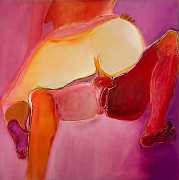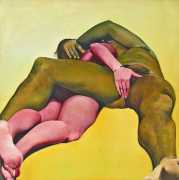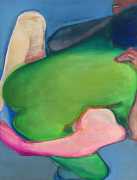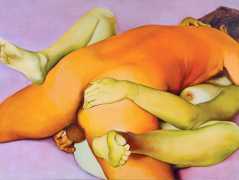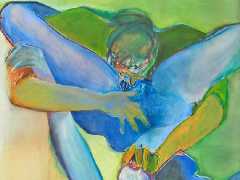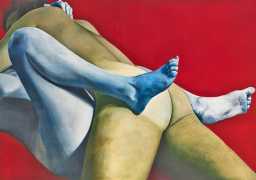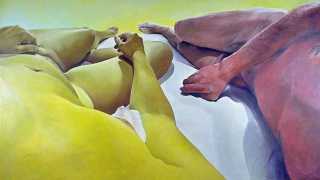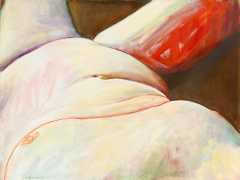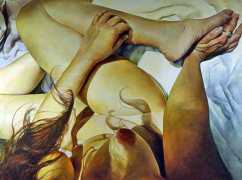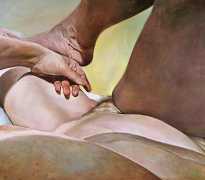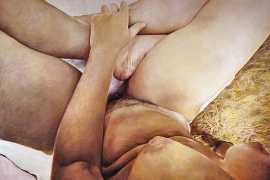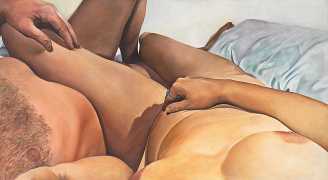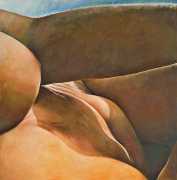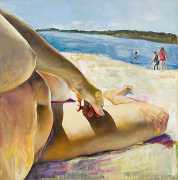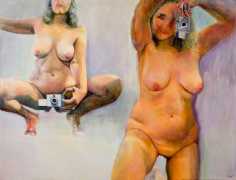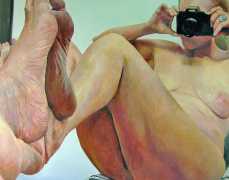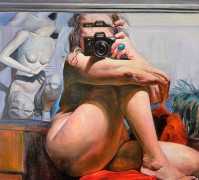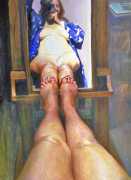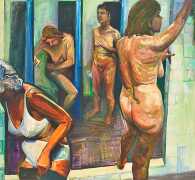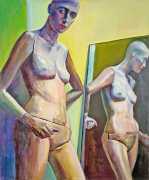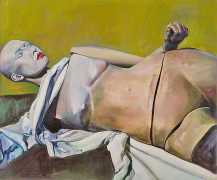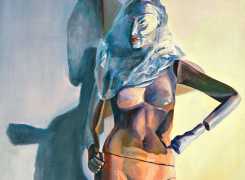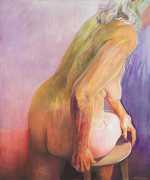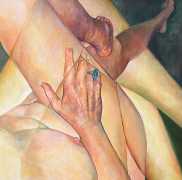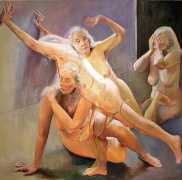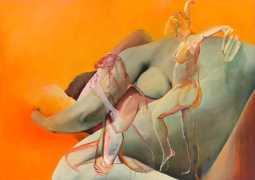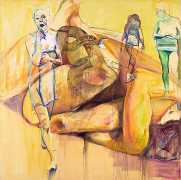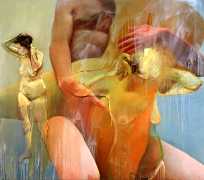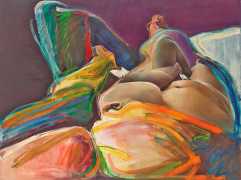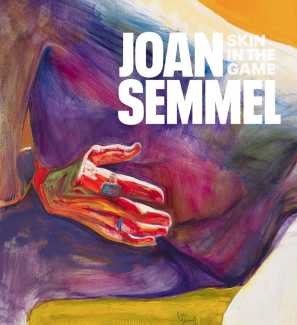 Skin in the Game is the title of an important 2020–21 solo retrospective exhibition of Joan Semmel’s work, which was held at the Pennsylvania Academy of the Fine Arts. It was the first retrospective of sixty years of the iconic artist’s groundbreaking paintings, from her early abstract-expressionist paintings, through her movement-defining feminist art and activism, to the vital work that she is making of her own mature body today.
Skin in the Game is the title of an important 2020–21 solo retrospective exhibition of Joan Semmel’s work, which was held at the Pennsylvania Academy of the Fine Arts. It was the first retrospective of sixty years of the iconic artist’s groundbreaking paintings, from her early abstract-expressionist paintings, through her movement-defining feminist art and activism, to the vital work that she is making of her own mature body today.
Joan Semmel’s earliest erotic paintings depict heterosexual couples having sex. The subject matter is explicitly erotic, but the compositions give a nod to abstraction with expressive, unnatural colours and a strong emphasis on individual forms. These large-scale depictions of sexual activity reclaimed a specifically ‘female gaze’ heralding an unprecedented approach to painting and representation in the early 1970s. The first two paintings shown here, from 1971, are titled ‘Flip-Flop’, and were exhibited side by side to demonstrate that either sex could occupy the top position.
Often referred to by Semmel as her ‘fuck paintings’, her second erotic series made in 1972–73 are sharp and realistic but retain the intense, unnatural colours her earlier work. The paintings are based on photographs of a man and woman having sex which Semmel took with their consent. When no commercial gallery in New York would show the series, Semmel rented space in SoHo and exhibited the work herself, attracting attention from critics. Semmel refused requests by Penthouse and Playboy to publish work from the series, though Erotic Yellow (1973) was used without permission in the May 1974 issue of Screw magazine.
During the 1980s Joan Semmel’s work became less abstract and more figurative, though she retained her interest in the way that naked bodies interact with each other. In order to concentrate on the physical interaction her paintings in this period, including both portraits and self-portraits, were nearly all of bodies from the neck down, the assumed viewpoint being that of the subject themselves rather than the external artist.
In 1987 she bought a house in Springs, East Hampton, where she continues to work each summer. Here she painted her Beach series, in which she positions bodies in a landscape. This new way of working was characteristic of Semmel’s painterly approach in the 1980s, a decade in which she began to push her practice in new directions. Writing about this period, Semmel wrote ‘I wanted to combine realist and painterly methods, insisting that a unified style is not preordained.’ In the late 1980s she also created her ‘locker room’ and ‘camera’ series, as a device to frame and question issues of perception and representation. She took photographs in women’s locker rooms, using the mirror and camera as, she explains, ‘strategies to destabilise the point of view, of who is looking at whom, and to engage the viewer as a participant. Also my paintings revealed a body at a more advanced age, aggressively pointing the camera at the viewer.’
Semmel’s ‘overlays series’ from 1992–96 combines conceptual and formal concerns echoing many of her previous investigations. For this body of work, she used pre-existing paintings from her erotic series as backgrounds for gestural images of naked middle-aged female bodies. These works represent a fertile moment of formal experimentation as Semmel began exploring colour and transparency, compositional elements that she continues to refine in her present day work. Writing about this series, she observes that ‘both non-naturalistic colour and linear overlays of complementary or contrasting images recall abstract elements, but can also provoke a suggestion of time, motion, and memory.’



